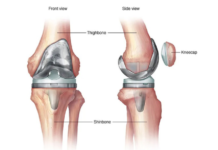New Delhi– In a groundbreaking study, scientists have, for the first time, directly visualized how Parkinson’s disease may be triggered in the human brain. Using a new technique called ASA-PD (Advanced Sensing of Aggregates for Parkinson’s Disease), researchers at the University of Cambridge and University College London were able to see, count, and compare tiny protein clusters long suspected of driving the illness.
These clusters, known as alpha-synuclein oligomers, are only a few nanometers in size and have long eluded direct detection in human brain tissue. With ASA-PD combined with ultra-sensitive fluorescence microscopy, scientists were able to detect and analyze millions of them in post-mortem brain samples.
“This is the first time we’ve been able to look at oligomers directly in human brain tissue at this scale: it’s like being able to see stars in broad daylight,” said Dr. Rebecca Andrews, who conducted the research as a postdoctoral fellow at Cambridge’s Yusuf Hamied Department of Chemistry. “It opens new doors in Parkinson’s research.”
The study, published in Nature Biomedical Engineering, compared brain tissue from Parkinson’s patients with that of healthy individuals of similar age. Oligomers were found in both, but in Parkinson’s brains they were larger, brighter, and far more numerous, strongly linking them to disease progression. Importantly, the team also identified a sub-class of oligomers present only in Parkinson’s patients, which could serve as an early biomarker years before symptoms emerge.
“Oligomers have been the needle in the haystack, but now that we know where those needles are, it could help us target specific cell types in certain regions of the brain,” said Professor Lucien Weiss of Polytechnique Montréal, who co-led the study.
The researchers believe ASA-PD could also be applied to other neurodegenerative diseases such as Alzheimer’s and Huntington’s, potentially transforming early diagnosis and targeted treatment strategies. (Source: IANS)













